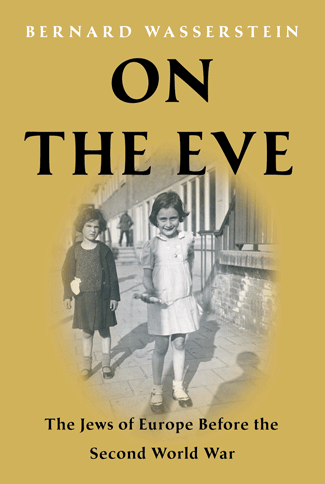Reviewed by NEAL GENDLER
Even before the Shoah, European Jewry was sliding toward destruction — self-destruction, or, as some then called it, “race suicide,” says Bernard Wasserstein in his broad, engaging overview of European Jewish life between the world wars.
Wasserstein, a University of Chicago professor of modern Jewish history with a very substantial résumé, lists causes still familiar: assimilation, low birth rate and marrying out of the faith. Jews also were converting to Christianity, a perceived means to social advancement, and leaving the continent; more than 1 million emigrated, although the United States all but shut its doors to them in 1924.
“In large measure, the Jews were victims of their own success,” Wasserstein says. He calls the Enlightenment “the first step in the dejudaization of the Jews of Europe” and the Great War the second step. Jews gained new freedoms, but “the more they took advantage of their newfound legal equality and embraced the national life of their countries of residence, the more they evoked a jealous, exclusionist hostility.”

Trying to blend in but confronted by violent enmity, “they embarked on a road toward collective oblivion that appeared to be the price of individual survival. As a result, Jewish culture was in retreat,” as was religious observance, he says. While Yiddish remained the daily language in poorer areas of the east, it and other Jewish languages were used decreasingly, and “the vitality of the culture to which they gave expression diminished.”
Jewish life in the interwar period reflected a “rapidly shifting and polymorphous social structure… Disorientation was accentuated by rapid urbanization.” Political views were diverse and heated, with secular, socialist, Yiddish-promoting Bundists at odds with, among others, the religious and Hebrew-promoting Zionists.
Poland’s Jewish community of 3.2 million was Europe’s largest, but “to a considerable degree isolated from the rest of the population,” he says. Still, Yiddish was giving way to Polish, especially in cities, and by the 1930s the majority of Poland’s Jewish children were receiving no Jewish education outside the home.
Heavy stuff. But it’s not all gloom and doom; Jews seemed to flourish in the 1920s. Organized by topics in a generally chronological flow, On the Eve’s bounty of information is easy to read, with some clever turns of phrase among its 436 pages of text, and seems to address just about every angle of European Jews’ social and political standing.
The Bolshevik revolution brought irony: As central Europe’s Jews were becoming socially isolated and politically restricted in the 1930s, those of the Soviet Union were enjoying new equality — but at the price of religious life. Historian Simon Dubnow — murdered in Riga in 1941 by a Latvian policeman — observed that in the 1930s, Soviet Jews, as a distinct entity, were “advancing towards complete disappearance.”
Quibbles? Tighter editing would have eliminated unneeded words. A glossary translates many foreign — mainly Jewish — words, but Wasserstein freely uses others, translated or not according to no rule I can discern. He usually avoids the academic’s trait of using dollar words when dime ones will do, although “eleemosynary” left me shaking my head; why not just say charitable?
A 22-page epilogue helps keep characters straight and tells what happened to them, and the book is well indexed.
Of course, it’s impossible to read without knowledge of the outcome — unimaginable to Europe’s 9.7 million Jews even in their deepening gloom and despair. Many Jews fled westward, impoverished, to perceived safety in European nations not always happy to have them. Others strained to reach a blockaded Palestine or any of the few spots to which they could gain legal entry, including Shanghai and Bolivia.
In a chapter about refugees — atrociously titled “camping” — Wasserstein says: “By early 1939, much of the continent was being transformed into a gigantic concentration camp for Jews.”
Chaim Weizmann put it perfectly: Their world was “divided into places where they cannot live and places where they cannot enter.”
The deadly result is almost too familiar, but far less so is this comprehensive picture of life across a continent, a portrait worth every penny.
***
Neal Gendler is a Minneapolis writer and editor.
(American Jewish World, 6.8.12)



















